On any technique. Jet mortars of the Nebelwerfer family (Germany)
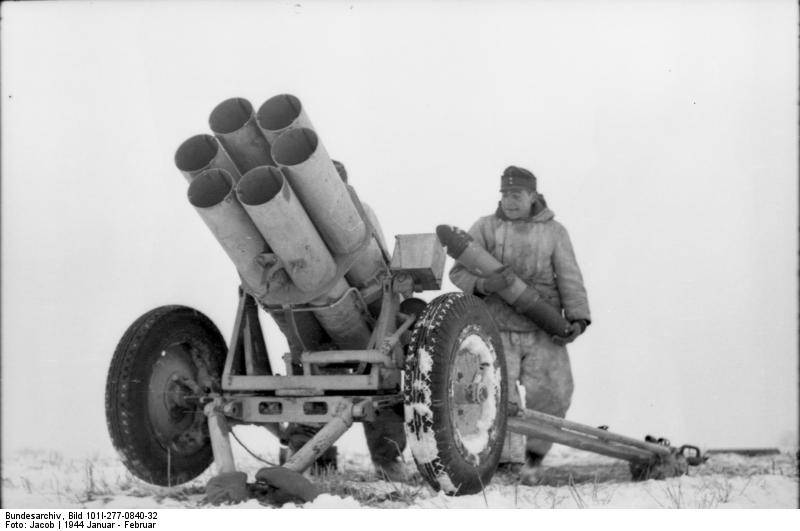
Hitlerite Germany paid great attention to missile systems for the ground forces, and in the early forties several similar samples came into service. Successively developed and deployed several rocket launchers of the Nebelwerfer family. They were based on the same ideas and solutions, but had structural differences and different characteristics.
Family start
The prerequisites for the appearance of the Nebelwerfer rocket launchers (literally "Mist thrower") took place already in the mid-thirties. At that time, the development of barrel mortars for chemical shells was underway. Using this weapons It was proposed to install smoke screens or use chemical warfare agents. The use of high-explosive ordnance was not ruled out. In a few years, they created two "throwers of fog" of classic mortar architecture.
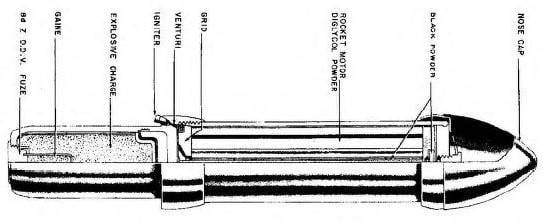
At the end of the thirties there was a proposal to abandon the mortar scheme in favor of rockets. By that time, Germany had serious experience in the field of unguided missiles, and it was used in a new project. A full-fledged sample of weapons of this kind appeared in the very late thirties.
The first samples of the new weapon called the 15 cm Nebelwerfer 41 (15 cm Nb.W. 41) entered the army in 1940, shortly after the end of the French campaign. By the time of the attack on the USSR, Nebeltruppe units had received a sufficient number of rocket mortars and were able to test them in battles.
Towed and self-propelled
Product Nb.W. 41 performed in the form of a towed system on a wheeled carriage. Its main element was a block of six tubular barrel-guides with a caliber of 158 mm, arranged in the form of a hexagon. The design of the mortar launcher allowed horizontal and vertical aiming. The length of the product, taking into account the beds, reached 3,6 m, own weight - 510 kg.
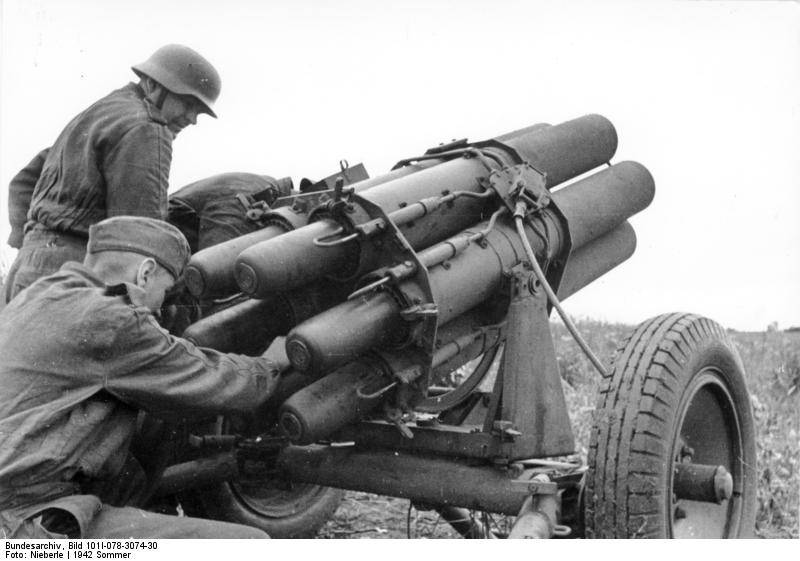
In the spring of 1943, the Panzerwerfer 42 combat vehicle went into series. It was a Sd.Kfz half-track armored personnel carrier. 4 / 1 with a redesigned landing compartment, which housed the launcher with 10 barrels. Such a vehicle was distinguished from the towed "Thrower" by large volley sizes and increased mobility, which also affected combat survivability.
For a jet mortar, turbojet shells of the 15 cm Wurfgranate 41 family were intended. These products had a tubular body assembled from several sections and intermediate sleeves. The head fairing was hollow. The front of the case contained a powder charge; in its walls there were oblique nozzles, providing a set of speed and promotion of the projectile around the axis. The tail compartment was given under the warhead - 2,5 kg of TNT, 4 kg of smoke-generating mixture or several liters of BOV. Grenades W.Gr. 41 had a length of not more than 1,02 m and a mass of not more than 36 kg.
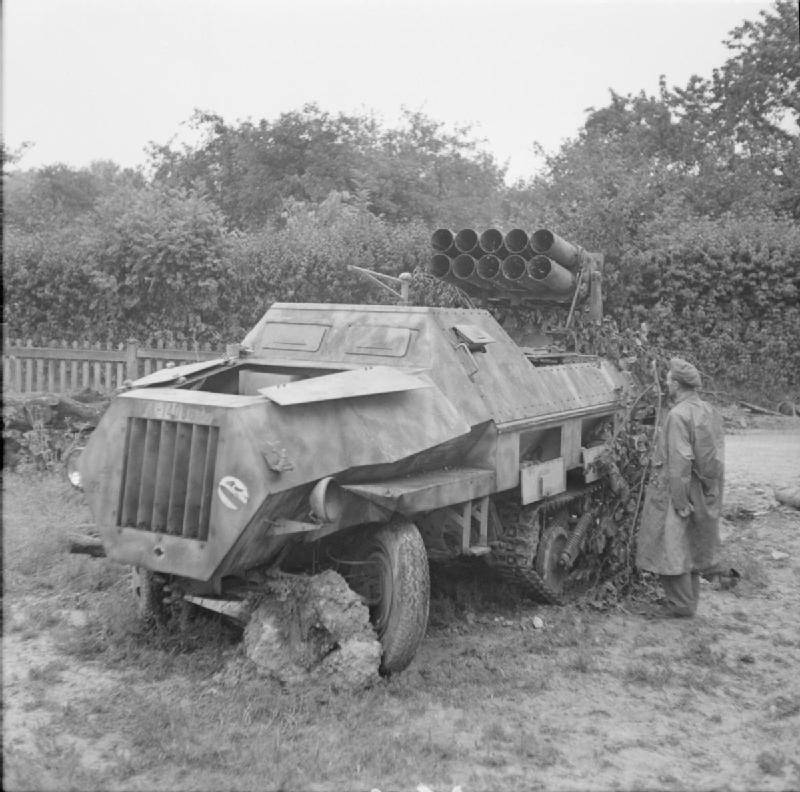
The powder engine accelerated a jet mine to 340 m / s. The maximum firing range is 6,9 km. Due to design features and manufacturing deficiencies, significant dispersion could occur, impairing accuracy.
The Nebelwerfer-41 mortars were actively used from 1941 until the end of the war. In 1941-45 About 6300 launchers of two types were built and approx. 5,5 million shells W.Gr. 41. Such systems were used both for their intended purpose, for setting curtains, and as a means of enhancing the barrel artillery. As far as is known, shells with BOV have never been used in battles.
The weapon coped with its tasks, although it was not without flaws. In particular, the smoke trail and the characteristic sound during engine operation unmasked the position, which is why towed mortars were at risk. The recognizable sound of a running engine led to nicknames. In the Red Army, the German mortar was called "Ishak", in the armies of the Allies - "Screaming Mimi."
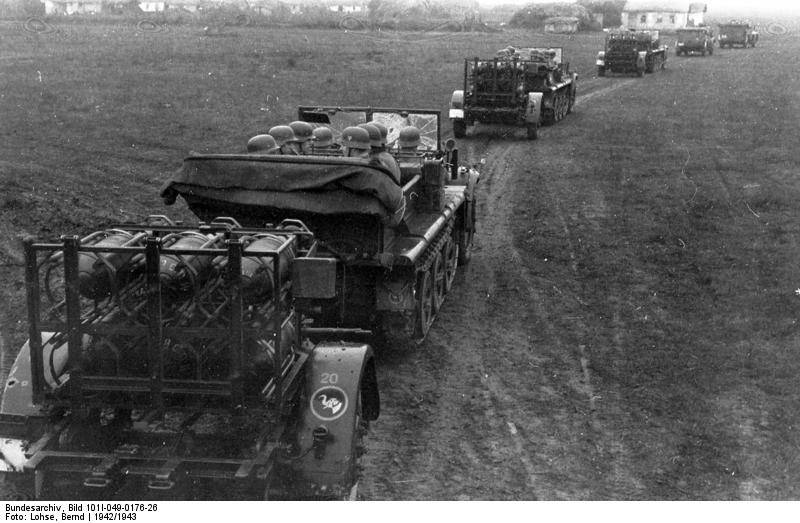
Increased caliber
In 1941, the “smoke forces” were armed with the 28 / 32 cm Nebelwerfer 41 mortar, which had a completely different architecture. Initially, such a system was carried out in a towed configuration, but then there were options for installing launch guides on different types of armored vehicles, both German and trophy.
Used high-explosive fragmentation shell 28 cm Wurfkörper Spreng. It had a main body with a warhead with a diameter of 280 mm and was equipped with a thinner shank with a powder engine. Such a product weighed 82 kg and carried 50 kg of explosive. The 32 cm Wurfkörper Flamm ammunition was also developed. He had a case with a diameter of 320 mm, weighed 79 kg and carried 50 liters of liquid load. In the event of a fall, the incendiary mixture or BOV were sprayed on an area of 200 sq.
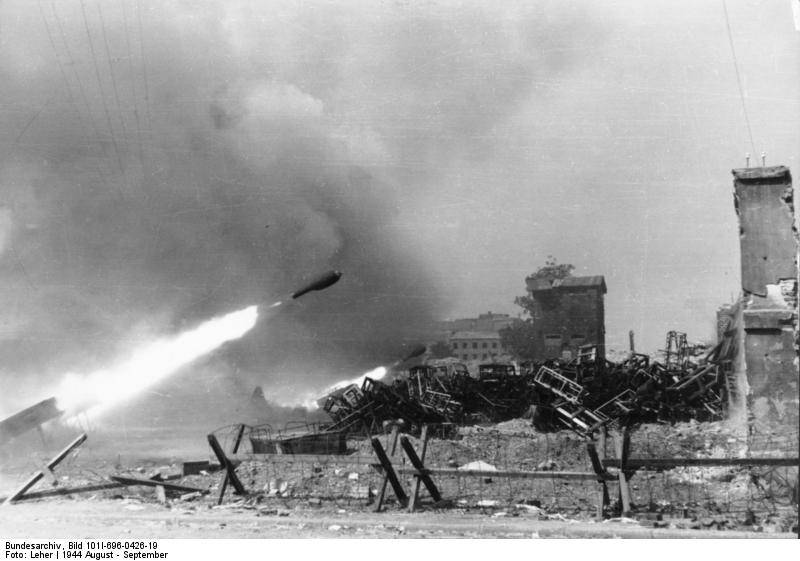
The powder engine accelerated shells of two types to a speed of 140-145 m / s. The high-explosive shell flew to a range of about 1920 m. The lighter 32 cm Wurfkörper Flamm had a range of 2,2 km.
The 28 / 32 cm Nebelwerfer-41 mortar was a towed system with a trellised package of guides for six shells. Also, as a launcher, a regular projectile capping laid on a support could be used. Capping was also fixed on military vehicles, this configuration of the launcher was called Wurfrahmen 40.
28- and 32-cm rockets were actively used on all major theater missiles. As with the previous system, in practice only high-explosive and incendiary ammunition were used. The 28 / 32 cm Nebelwerfer 41 mortar was different from the 158-mm system with a lower firing range, but with a higher projectile power. The advantage was the ability to mount the mortar on a self-propelled vehicle.
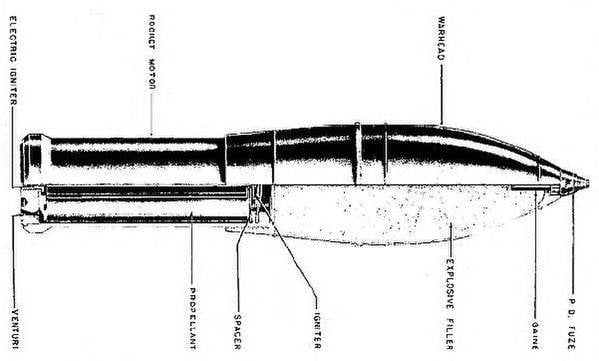
Based on 28 / 32 cm Nb.W. 41 the 30 cm Nb.W system was created. 42 high explosive shell 30 cm Wurfkörper 42 Spreng. By its design, it looked like existing ammunition, but was distinguished by a more streamlined body shape. An 1,2 m long projectile weighed 127 kg and delivered 67 kg of TNT to a range of 4,5 km. The 30 cm Nebelwerfer 42 launcher was practically the same as the existing frame construction systems.
Five-barrel mortar
In 1942, another rocket mortar appeared, combining the features of previous models - 21 cm Nebelwerfer 42. The launcher included five 210-mm tubular barrels on a wheeled carriage. Later this mortar was rebuilt for use in aviation.
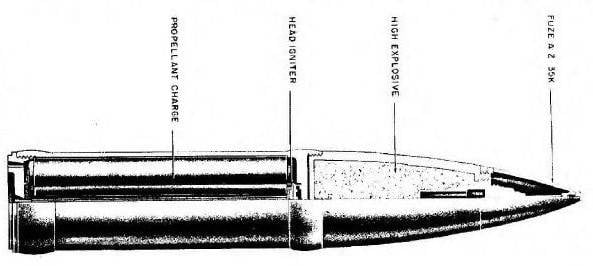
210-mm rocket W.Gr. 42 had a cylindrical body with a lively head. Product length - 1,25 m, weight - 110 kg. The fairing contained a warhead with 10,2 kg of explosive; other loads were not foreseen. The remaining volumes were given under the engine. The shell accelerated to 320 m / s and flew to 7,85 km.
In the interests of the Luftwaffe, the 21 cm Nb.W version was developed. 42 called Werfer-Granate 21 / Bordrakete 21 / BR 21. Missile 21 cm W.Gr. 42 retained the basic elements, but was equipped with a different fuse. Detonation was carried out at a distance of 600-1200 m from the launch point. The range of detonation was set before take-off carrier. Single-engine fighters of the FW-190 type could carry two tubular guides for missiles, heavier aircraft - up to four.
In the original role of the 21 rocket mortar, the cm Nebelwerfer 42 performed well. A volley of several installations covered a sufficient area, and a significant payload had the desired effect on the enemy. However, shortcomings remained in the form of low accuracy and accuracy.
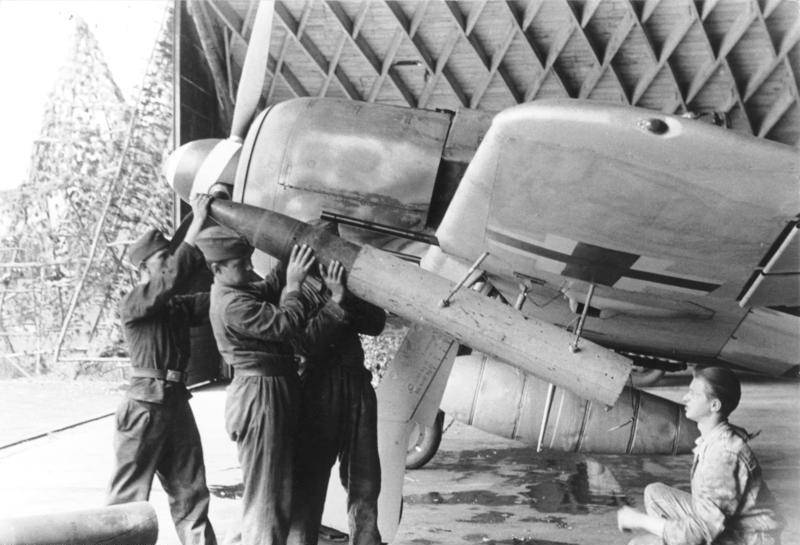
The BR 21 missile proved to be ineffective. The unguided missile was not very accurate, and preliminary guidance and launch from the required distance were too complicated and dangerous due to enemy return fire. As a result, missile weapons could not show sufficient effectiveness even in the fight against dense bomber systems.
Mist Throwers on the battlefield
German rocket launchers / multiple launch rocket systems were actively used from 1940 to 1945 to solve a number of basic tasks. Nebeltruppe units were responsible for setting the curtains and strengthening other artillery. In special cases, they had to use BOV - but it didn’t come to that. From a certain time, jet weapons were used by combat aircraft.
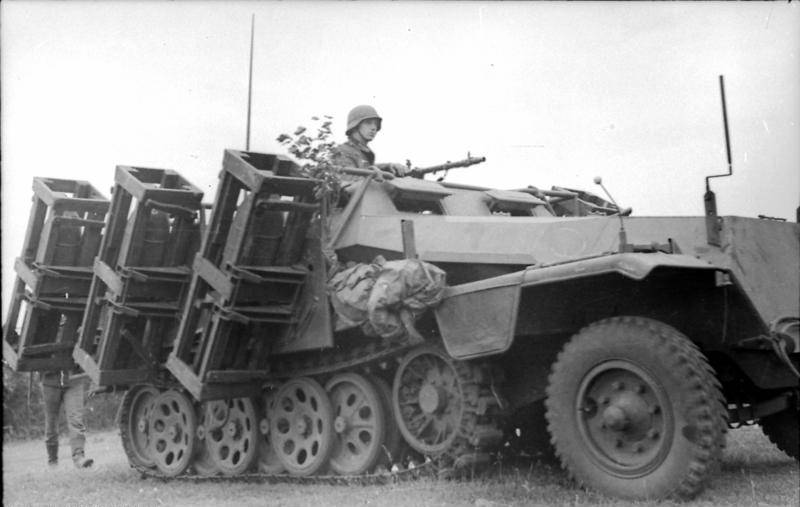
The most popular model of the family was the first serial mortar 15 cm Nb.W. 41. Other samples were made in a smaller series. The total release of launchers has reached several tens of thousands. The most massive were 158-mm rockets - 5,5 million units. The production of the rest did not exceed 300-400 thousand units.
Nebelwerfer systems were used mainly as rocket artillery to complement the barrel systems. In this role, they showed good results, but still did not have a decisive influence on the course of battles. The results of the use of jet mortars were affected by their insufficient number and some design problems. A volley of several installations with high dispersion did not give all the desired results. Also, in some cases, the power of a light warhead was insufficient.
Nebeltruppe units and their weapons actively participated in battles in all theater operations and generally coped with the tasks. However, usually they could not seriously influence the course of battles. Moreover, the systems of the family could not prevent the logical ending - in 1945 Hitler Germany, along with all the Nebelwerfer, was defeated. Including with the help of more advanced, effective and successful jet mortars.
Information